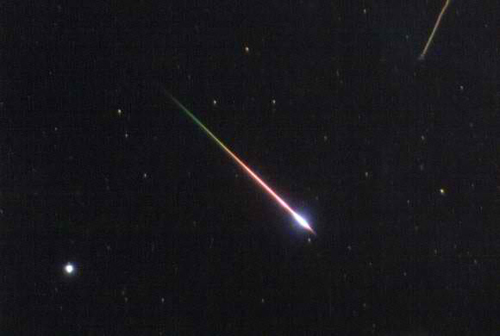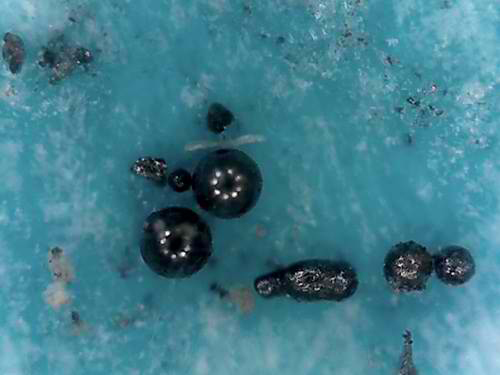“A little sea sprite, on the sea one night, Cried “ now is the time for me”
And he looked above, and he looked for his love, for he was in love you see.
Not a bit to soon, She came to the moon, Where she grasped her lovers hand.
And they sang with glee, As they splashed in the sea,
Right into the sea sprites land.”
(Originally published in manuscript form in 1899 by Jack London
“The sea sprite and the shooting star”)
We humans love our shooting stars as we wish upon them, write poems about them, and stare in awe as they streak across a black sky with there blazing colors lighting up the ground we stand. Even our fireworks emulate them, They come in many colors and brightness, and at different speeds. Some are small and faint, while others are huge fireballs breaking up into many smaller streaks, but always they are beautiful.
I have often lain in a gravity chair on a cool, dark, starry night. The silence and the vastness of the sparkling night sky dominates my senses, when all of the sudden, there she goes! – burning up as she enters our night sky, ripping through our atmosphere, so bright that she leaves a faint shadow on me and the ground. She will move across the heavens with speeds incomprehensible and burn out and be gone as fast as she came. Where did she come from? How many millions of years did she wander the cosmos before ending life here in front of me.
Shooting stars actually have nothing to do with stars as they are the broken pieces and remnants of comets and asteroids, They are called “meteoroids” as they enter the atmosphere; they are called “meteors”, and, if they hit the ground, they are called meteorites”, As a comet traverses our solar system it leaves behind a trail of rock, iron, and ice debris, from dust and pebble size to large rocks and boulders, in there orbits. And as our planet moves throughout the year around our sun, we pass through these debris fields and slam into them at 66,700 miles per hour. When something is hit at that speed it will instantly release energy and vaporize. Most meteors burn up before making it to the ground.
Several thousand meteors hit Earth everyday but most are the size of a grain of rice or smaller. Meteors slam into earth both day and night but are only visible at night because of darkness. You can estimate what a shooting star is made of by watching its colors as it burns across the night sky. Orange/yellow is (sodium), yellow is (iron), blue/green is (copper), purple is (potassium), and red is (silicate). It is estimated that 37,000 to 38,000 tons falls to earth each year as meteorite dust, thus causing earth to gain mass. If you are watching for meteors you will notice that they move at different speeds. There speed is a result of our planet hitting them from behind as we travel in the same relative direction or hitting them head on.
In all of recorded history, no person has ever been killed by meteorite, but a number of people, vehicles, and property have been struck by them, In 1954 a housewife in Alabama was asleep on her couch when a large rock crashed through her roof, bounced off a piece of furniture and wounded her in the hip. On October 9, 1992, a 26-pound chunk of melted iron punched a large hole clear through the trunk-lid of a Chevy and was found under the vehicle, The old run down car instantly became worth tens of thousands of dollars, In June 1994 in Spain a man and wife were driving when a 3-pound meteor crashed through the windshield, bending the steering wheel and landing in the rear seat, The driver only suffered broken fingers. But most falling stars land in deserts and the ocean, as most of our home planet is covered with water.
Physicists tell us that everything is really made of stardust, so if you would like to get your hands on some stardust of your own then here is a simple way to get some: Cosmic dust lands all over the Earth’s surface, including the roof of your home, everyday. Take a magnet and run it down your rain gutters or on the ground at the bottom of your rain downspout. You will pick up white, grey, and black particles. (Micrometeorites are generally very tiny, glassy-looking black spheres, and almost always round.) You are now holding your very own micro-meteorites. They were once a grand heavenly body that drifted through the cosmos and has now come to rest in the palm of your hand.
Wesley J Hunt wes81461@yahoo.com
Crossroads Astronomy Club meets every third Monday at 7:00pm at the University of Houston @ Victoria, room 223.
For more info call KB Hallmark at 361-648-0089
Wesley Hunts Blog “Adventures of Life”
http://wesleyjhunt.blogspot.com/


